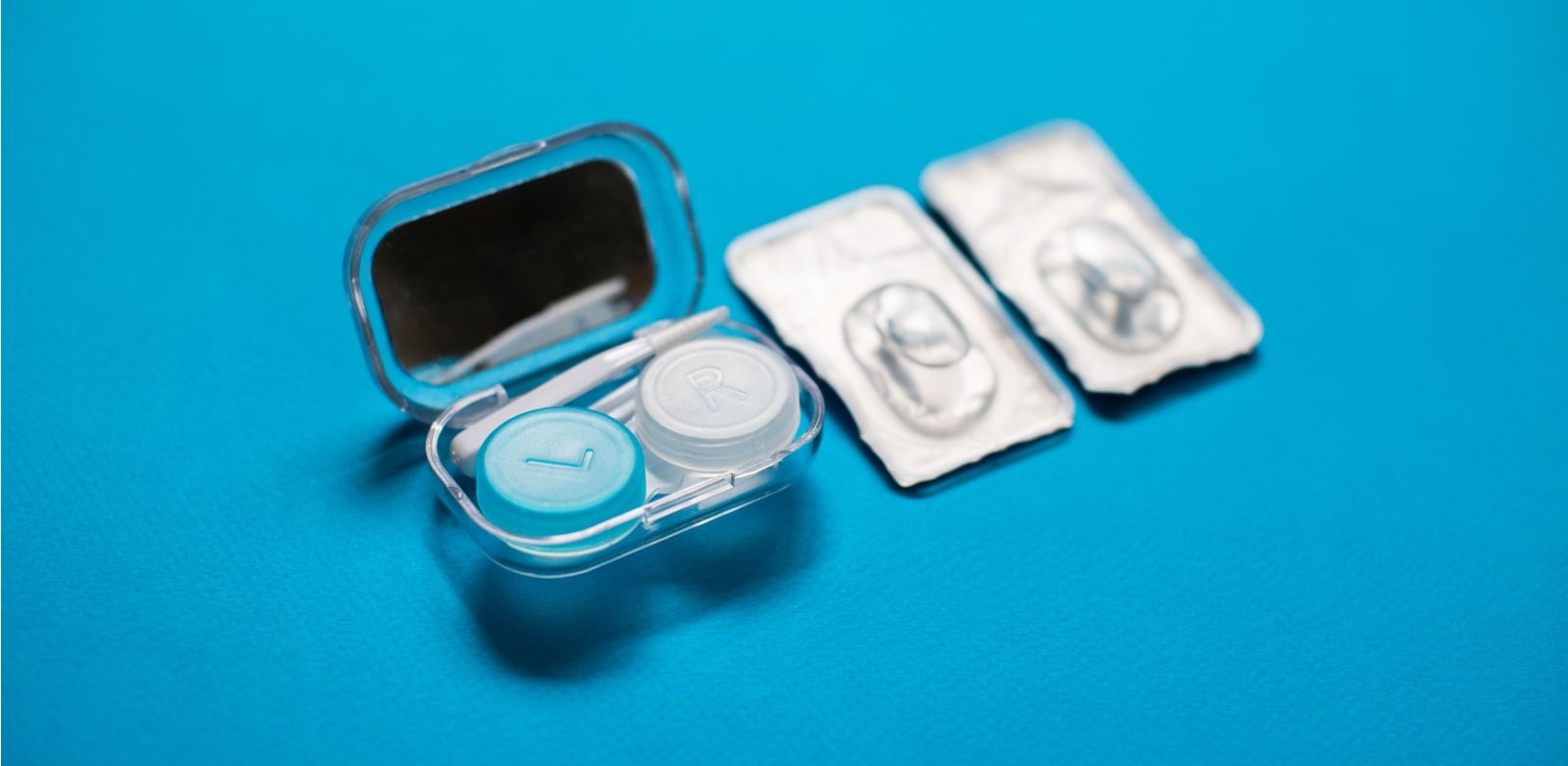Contact lenses types: everything you need to know

When it comes to ordering contact lenses, there are a multitude of different lens types. You can order nearly all kinds of contact lenses online , and shipped to your door, from daily contact lenses to weekly contact lenses or monthly contact lenses.
If you are just starting to use contact lenses, it can be overwhelming trying to read up on the different contact lenses types available . That's why we've composed a list of different lens types and their pros and cons, so you can decide together with your optometrist what solution works best for you.
Contact lenses types: pro & cons
Depending on the contact lenses material, contact lenses can be classified as hard or soft contact lenses, each kind has its own strengths and weaknesses in terms of clarity and comfort. Let's start by taking a look at hard contact lenses vs soft contact lenses:
Hard contact lenses
As the name suggests, hard contact lenses, or PMMA lenses, are made of a rigid plastic material. Though they provide excellent vision correction and are quite durable, they are susceptible to scratches, and don't allow for high levels of oxygen transmission to the eye. For the wearer to get accustomed to the lens, they must be worn consistently, and it may take a while to get used to them.
These lenses make up only a small percentage of the lenses on the market today and are increasingly becoming replaced by other types of rigid contact lenses such as Rigid Gas Permeable lenses which were developed to optimize oxygen flow through the lens to the cornea, while still maintaining their shape.
Gas permeable contact lenses
Gas permeable lenses are another kind of rigid contact lens similar to hard contact lenses, but with one key difference: they are porous and allow oxygen to flow freely through them. These lenses often provide for clearer vision than soft contact lenses, especially for people with astigmatism. While it can take some time for people to adjust and become accustomed with wearing these kinds of lenses, they are reportedly as comfortable as soft lenses.
Gas permeable lenses are typically more durable and provide clearer vision than soft lenses and can be less expensive than other lenses in the long run because of their durability. However, it can take several weeks to get used to wearing them, considerably longer than for soft contacts.
Soft contact lenses
Soft lenses are made from plastics containing water, called hydrogels. The hydrogels allow for increased flexibility and conformity to the surface of the eye, making them much more comfortable to wear than other kinds of lenses. Just like gas permeable lenses, soft contact lenses also allow for oxygen flow to the cornea. Soft contact lenses may be easier to adjust to and are more comfortable than rigid gas permeable lenses. Newer soft lens materials include silicone-hydrogels to provide more oxygen to your eye while you wear your lenses.
Toric contact lenses
Toric contact lenses for astigmatism are soft contact lenses that are designed to refract light in a specific direction and provide greater comfort for the wearer. These lenses are produced according to a particular design, meaning that they need to remain fixed in place on the surface of the eye in order to properly correct the astigmatism. In order to keep toric lenses fixed in place, the lenses are designed to carry more weight at the bottom of the lens.
Multifocal contact lenses
Multifocal contact lenses correct nearsightedness and farsightedness in the same lens. However, multifocal lenses have several focal points in each lens for distance, intermediate and reading correction. These lenses are available both as hard and soft contact lenses.
Bifocal contact lenses
Bifocal contact lenses are designed to correct according to two powers, allowing for prescription correction of both nearsightedness and farsightedness . They come in soft and hard options.
Colored contact lenses
Colored contact lenses are cosmetic lenses designed to change or intensify the color of the eye. These lenses are available for most types of contacts and typically require a prescription even if they are not used to correct errors in vision.
Best contact lenses type
The best type of contact lenses are the ones that makeyou feel most comfortable and confident with your vision. Make sure to have a conversation with your eye doctor to discuss what kind of contact lenses best suit your needs.


